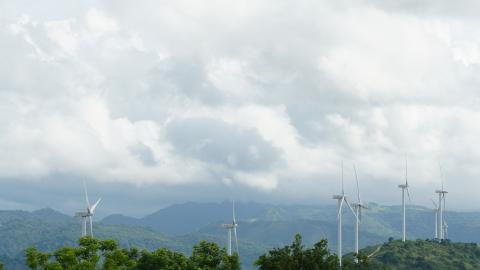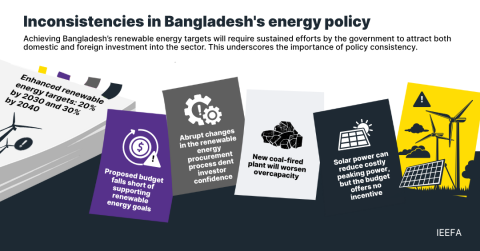IEEFA Update: Financial Facts Don’t Support Coal Industry’s Claims of 2017 Recovery
As 2017 ended, coal industry leaders made a number of upbeat statements to the press and investors, citing what they saw as good news: regulatory rollbacks by the Trump administration, promises of future federal subsidies, improved profits, an increase in coal exports and metallurgical sales, a few loan closings, and a late year stock price surge.
However, a deeper examination shows that the coal industry in fact faces a very tough road to real financial recovery, as indicated by these negative financial events of the past year:
Peabody Energy Writes off $6.5 Billion in Value in its Land and Coal Interests
The big story about Peabody Energy in 2017 was that it stiffed its creditors for $8.4 billion in debt as part of its emergence from its 2016 bankruptcy. It was not as well reported, though, that by using ‘fresh start’ accounting, Peabody took a 63% drop in the asset value of its U.S. and Australian land and coal interests, writing off $6.5 billion (from $10.3 billion down to $3.8 billion), and took another $2.2 billion write down of buildings and machinery.
But In doing so, the company seems to have overlooked the post-bankruptcy values of its assets. In a recent disclosure, the company claimed it still had 5.7 billion tons of coal reserves as of December 2016. A 63% write down of the value of coal assets should indicate that at least some portion of the company’s physical reserves are no longer economically viable, and that therefore the company’s 2017-year end statements should show a reduction in its reserves to reflect that new reality.
More bad news hit Peabody when the coal-fired Navajo Generating Station — the sole customer of Peabody’s 6 million ton per year Kayenta mine – announced it would close in 2019. With nowhere to sell its coal, this mine will likely close.
Mine Transfer Results in the First Negative Valuation in the Powder River Basin
Though the Powder River Basin in Wyoming and Montana is still the most prolific coal production region in the nation, production has been declining. Now, the region has experienced its first publicly disclosed negative value transaction.
In late 2017, Contura Energy, a bankruptcy spinoff of Alpha Natural Resources, transferred the Eagle Butte and Belle Ayre mines to Blackjewel, LLC., a company that did not previously own mines in the Powder River Basin. Contura is writing off the value of the mines. These mines produce 8400 BTU coal, which produces less energy than 8800 BTU coal and thus brings in lower prices. Blackjewel accepted the liabilities of the mines and promised future revenues to Contura.
When it emerged as a going concern from Alpha’s bankruptcy in January 2017, Contura had said it was not pursuing further divestment or acquisitions. Moody’s downgraded Contura after it sold the mines to Blackjewel, because the company is no longer diversified and depends solely on its eastern metallurgical assets.
Acquisition of Bowie Mines for $510 million Collapses as Investors Say “No”
In October 2017, Bowie Resource Partners announced that Murray Energy would take over its Utah operations. The deal, financed with $510 million in new bonds, would refinance bonds due in 2020 and pay off Bowie’s current owner, Trafigura PTE Ltd. But the deal soon collapsed. Investors didn’t buy Bowie’s market price. Trafigura will now have to either wait and hope for an improved market or report that the value of its investment is substantially impaired.
Peabody and Bowie also settled their dispute in 2017 from the collapse of a $358 million three- mine deal – an event which had helped trigger Peabody’s 2016 bankruptcy declaration.
Westmoreland’s Mines Hit by Closed Power Plants and Losses of Customers
Westmoreland Coal, which sells its product to coal-fired power plants across many states, lost significant parts of its customer base in 2017, as some plants closed and other customers moved their business to competitors. This left the company – which is likely to lose more customers in the coming years with the announced closings of several more plants — with late year credit downgrades and discussion of potential Chapter 11 filing. As the year closed, Westmoreland saw a heavy influx of hedge fund investors.
Armstrong Declares Bankruptcy
In November, Kentucky-based Armstrong Energy became the first coal company to file for bankruptcy under the Trump administration. The thermal coal miner said it would continue operations during the bankruptcy process and would transfer assets to Illinois-based Knight Hawk.
Government Ends Lease Moratorium, Opens up Federal Coal Lands; Companies Cancel Plans for New Mines
The Trump administration, in response to pleas from the coal industry, cancelled a moratorium on federal coal leasing that had been imposed by the Obama administration. But the lifting of the moratorium has not spurred a wave of new lease applications. Instead, four companies –Contura, Cloud Peak, Kiewit and Arch Coal –canceled active lease applications due to weak market conditions. This is a stark contrast to the way the markets responded the last time federal officials canceled restrictions on lease applications, in the late 1980’s, During that period, the Department of Interior saw a significant rise in the number of new applicants, reflecting increased demand for coal.
To sum up, if there were good prospects for a coal recovery, there should be a robust market for coal assets. There isn’t.
Tom Sanzillo is IEEFA’s director of finance.
Related Posts
IEEFA Update: In Federal Coal-Policy Reversals, Trump Is Handing Out Snowballs in a Blizzard
IEEFA Update: The Coal ‘Comeback’ of 2017
IEEFA Update: Across a Bedeviled Industry, Too Much Coal Is Being Mined Still for Too Few Customers
IEEFA Report: Kayenta Mine Is Unlikely to Find New Customers Once Navajo Generating Station Closes















